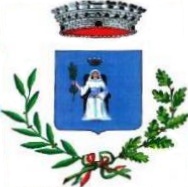
Santa Marina and | ||
| The comune of Santa Marina and its patron saint, celebrated on 18th June, have the same name. Saint Marina's story is peculiar (although other female saints had a similar story) and it’s sometimes confused with that of other Marinas. It seems that Marina lived in the 5th century but it’s not certain where. Several places where Marina is venerated (Egypt, Thrace, Bithynia, Sicily, and Lebanon) claim being her birthplace. | ||
Saint Marina | ||
| When Marina's father widowed, he went to live in a monastery. To remain with him, Marina disguised herself as a man and joined him in the monastery and changed her name in Marino. When the monks left the monastery for a long journey and had to sleep at an inn, the innkeeper’s daughter was seduced by a soldier, got pregnant and blamed Marino (Marina). Marina was expelled from the monastery and was given the baby to bring up. Anyway she continued to live near the monastery, crying and repenting, although unjustly blamed. Impressed by so much repentance, after three years the prior admitted her again to the monastery, where she lived as a very good monk, as before. Some time later Marino/Marina died and when preparing the body for the burial the monks realised that Marino was actually a woman and so they understood that she had been victim of defamation and that she had accepted it. | ||
| ||
as seen by Viola in music, Everything about the viola | ||
| The comune of Santa Marina is in the Campania region, on top of a hill, at 415 metres above the sea level, surrounded by beautiful countryside and has about 3300 residents. Within its territory is the village of Policastro, quite famous seaside holiday resort, which also gives name to the Golfo di Policastro (Gulf of Policastro). Around the 7th century some families running away from persecutions established themselves here among the mountains. They founded a church (still existing). It was founded by Greeks and was of Greek rite until around 1000. This is proved by the saints venerated by them, Saint Calogero and Saint Marina of Bithynia. Maybe it’s because of their veneration for Saint Marina that the village took her name. | ||
| To defend themselves, they built their houses on the eastern side of the hill, very close to each other, so that they couldn't be seen from the sea, with only one narrow access road, with staircases, curves and windows to watch the access. More people came to live at Santa Marina, after the destruction of other villages nearby, so the town developed and became the seat of a tribunal. In Saint Francis times they built a small church with a monastery, still existing, which was then enlarged and now shows an exceptional Altar in pure Baroque style. From the square in front of the church you can enjoy two spectacular views: the rocky Infreschi promontory, with its wonderful clear blue sea and, on the other side you can admire see the Apennines hills, with their top covered with snow. Olive groves with a mild breeze from the sea and snowy tops, what a contrast! From the end of 16th century Santa Marina was the seat of Count Carafa, a noble family from Naples (Napoli) from which, by the way, 26 bishops and 12 cardinals came (one became pope Paul IV), and Santa Marina was of the Kingdom of Naples until the unification of Italy in 1861. Nowadays it can rely on tourism thanks to the beautiful coasts and sea of its gulf. Due to its position, the weather is mild for most of the year, hot in summer and cooler inland and in winter, ideal for a holiday! | ||
Other important events | ||
Don't miss the opportunity to visit Santa Marina at any time of the year! Find your accommodation near Santa Marina Save between $20 and $100 on ALL Hotel Bookings Now! Thanks to Viola in music, Everything about the viola, who provided the above description of Comune di Santa Marina and its patron saint celebration. Visit their website www.viola-in-music.comFor more information: Comune di Santa Marina via Santa Croce Santa Marina - SA tel. +39 08 e-mail: Visit the official website of the Comune di Santa Marina Cerca nel sito
When you contact this comune let them know you found them on www.calendar-of-patron-saints-and-cities-in-italy.com Go from Santa Marina and its patron saint to the Campania region
|
